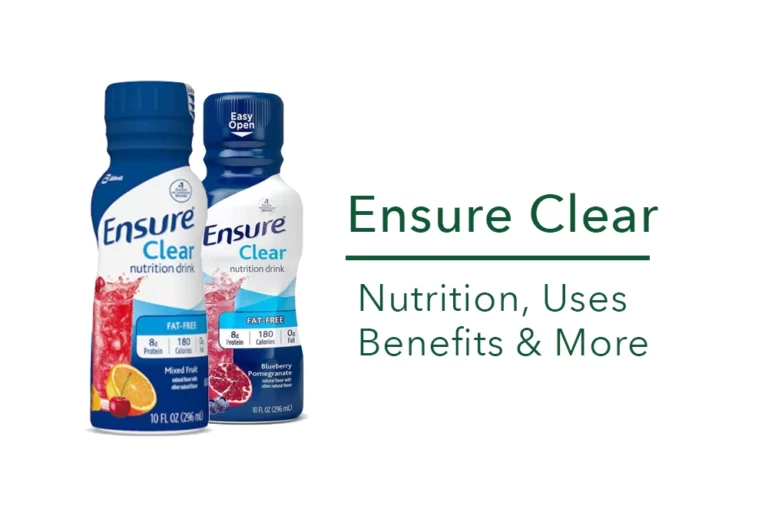6 Best Exercises to Gain Weight and Build Muscle
Whether due to an illness, advancing age, or to perform better at a sport, many people desire to gain weight.
While gaining weight primarily entails consistently eating more calories than your body needs — known as a calorie surplus — exercise plays an important role too.
This article lists the 6 best exercises to gain weight and build muscle and provides practical nutrition tips to boost your calorie intake.

The benefit of exercise for weight gain
Exercising — namely resistance or weight training — ensures that most of the weight you gain from eating in a calorie surplus comes in the form of muscle mass rather than fat mass.
This is the biggest benefit of exercise for weight gain but there are several others as well.
The more muscle mass you have, the better your body can maintain healthy blood sugars. This is especially true for people with type 2 diabetes (1).
What’s more, resistance training helps you build a foundation for older age, allowing you to maintain your independence for longer.
Even then, older adults can greatly benefit from exercise since it combats sarcopenia — the progressive loss of muscle and mass that occurs with advancing age (2).
There is no best exercise for weight gain, but it’s best to exercise all major muscle groups at least 2–3 times per week (3).
Complete each exercise 3–4 times using a weight at which you can perform 8–12 repetitions. You should struggle but still be able to complete the final two repetitions.
If you can complete 8–12 repetitions comfortably, increase the weight.
Over time, you will need to increase the weight or number of repetitions you do to progress and grow stronger.
It’s best if you have access to a gym, but you can complete these exercises at home using dumbbells or other home exercise equipment.
You can also get creative with common household items.
1. Squat
The squat is a foundational human movement that recruits early every muscle in the body to perform.
It’s great for building strength, power, and mobility.
The squat is commonly performed under a barbell but you can practice using your bodyweight if you don’t have access to a squat rack or if you want to first master your form.
Here’s how to perform the barbell squat:
- Position the bar high on the back of your shoulders and grasp the barbell on both sides. Dismount the bar from the rack and stand with a shoulder-width stance.
- Squat down by bending your hips back while allowing your knees to bend forward. Keep your back straight and your knees pointed in the same direction as your feet.
- Descend until your thighs are just past parallel to the floor. Extend from your hips and knees until you are in the starting position.
To perform a bodyweight squat, stand with your arms extended forward and proceed with steps 2 and 3.
2. Deadlift
The deadlift is another foundational lift that involves nearly every muscle in the body.
A deadlift is performed with a barbell but you can try the exercise using a pair of dumbbells.
Here’s how to perform the deadlift:
- Standing with your feet beneath the bar, squat down and grasp the bar with a should-width overhand or mixed (one hand under and the other over) grip.
- Lift the bar by extending your hips and knees to full extension. Prevent your back from rounding at the top by pulling your shoulders back.
- Return the bar to the floor by bending your hips and knees. Repeat.
Depending on your experience level, you try deadlifting the barbell without loading it with weight. This will also help you get your form down for when you want to go heavier.
3. Plank
The benefits of working your core go well beyond washboard abs.
A strong core leads to better balance and stability. A strong core also reduces the risks of a back injury during other exercises like the squat and deadlift while also enhancing your strength to perform them.
There are dozens of exercises you can do to target your core, but the plank is a great starting place. Plus, it requires no equipment.
Here are the steps to perform the plank:
- Lie face down on the floor. Place forearms on the floor, keeping your elbows under your shoulders. Keep your legs together.
- Raise your body upward by engaging your core muscles to straighten your body in a straight line. Hold position.
4. Military press
The military press — also known as the overhead press — is a standing exercise that targets your shoulders.
It also works parts of your upper back and requires a strong core.
The military press is generally performed with a barbell but you can use dumbbells or items you have at home like two one-gallon jugs.
Here’s how to perform the military press:
- Grasp the barbell from the rack with an overhand grip, slightly wider than shoulder-width.
- With the bar in front of your neck, press upward until your arms are extended overhead.
- Lower to the front of your neck and repeat.
5. Biceps curl
The biceps play an important role in lifting and pulling movements.
So while big biceps are nice, it’s beneficial to have strong biceps to perform everyday tasks.
The biceps curl is a classic exercise that you can perform using a barbell or pair of dumbbells.
Here are the steps to perform a biceps curl:
- Grasp a barbell with a shoulder-width underhand grip.
- Keeping your elbows to the side, raise the bar until your forearms are verticle.
- Lower the barbell until your arms are fully extended. Repeat.
6. Triceps pushdown
The triceps’ main job is to extend the elbow and assist in pressing movements.
Although the biceps get the most attention, the triceps comprise over 2/3 of the upper arm, so it’s important to train them for weight gain.
Exercises that target the triceps involve elbow extension like the triceps pushdown.
You can perform the triceps pushdown using a cable rope or bar attachment.
Here’s how to perform the triceps pushdown using a cable bar attachment:
- Face a cable machine and grasp the cable bar attachment with a narrow overhand grip.
- With your elbows to the side, extend your arms down.
- Return the bar until your forearm is slightly above parallel with the floor. Repeat.
If you don’t have access to a cable machine, you can target your triceps with a standing overhead triceps extension using a dumbbell or other heavy object.
To perform this exercise, grab a dumbbell with one arm and raise it behind your head, keeping your entire arm verticle.
Lower the weight behind your head until your lower arm is horizontal with the floor, and then extend your arm straight while keeping your elbow still.
How many calories do you need to gain weight?
Exercise is beneficial for gaining weight, but it’s ultimately your nutrition that drives the process.
This is because you must consistently consume more calories (calorie surplus) than what your body uses.
Losing weight requires that you do the opposite — consistently consume fewer calories than what your body uses.
Therefore, regardless of exercise, you must eat in a calorie surplus.
You don’t need to track your calories to gain weight, but doing so gives you an idea of whether you’re eating enough or too little.
The number of calories you should eat to gain weight depends on the number that you need to maintain your weight — known as your maintenance calories.
You can use online calorie calculators to estimate your maintenance calories or multiply your body weight in pounds by 14 if you’re a female or 17 if you’re a male.
Alternatively, if you eat relatively the same each day and you are maintaing your weight, you can track your calories for one day and use that number as a rough estimate for your maintenance calories.
Once you have an idea of your maintenance calories, add 200–500 to get your calorie goal for weight gain.
If you estimate your maintenance calories to be 2,000, you should consume 2,200–2,500 to gain weight.
As you gain weight, you will need to increase the number of calories you consume every 4–6 weeks until you reach your goal weight.
This is because the more you weigh, the more calories you need to maintain your body weight.
A 200–500 calorie surplus should allow you to gain 0.25 to 0.5% of your body weight each week, or 0.4 to 0.8 pounds (0.2 to 0.4 kg) per week for a 150-pound person.
Ways to boost your calorie intake
Eating enough calories daily to gain weight can be difficult if you struggle with a poor appetite, have a fast metabolism, or require more calories to maintain your weight due to a medical condition or treatment.
Here are some tips to help you boost your calorie intake:
- Eat more often. Aim to eat three high-calorie meals, separated by two to three high-calorie snacks daily instead of three large meals.
- Drink your calories. High-calorie shakes and smoothies are an easy way to get lots of calories in before you get full.
- Eat more fat. Fat provides more than double the calories of protein or carbs per gram making high-fat foods beneficial for weight gain. Good choices include avocados, nuts and seeds, nut butters, oily fish, olives, and oils like olive or canola.
- Use weight gainers. Weight gainer supplements shouldn’t replace whole food but they’re great to supplement your diet since they pack many calories in a low volume.
Appetite stimulants or weight gain pills — whether prescription or over-the-counter as a supplement — should be a last resort since many aren’t effective and can have negative side effects, especially in older adults.
The bottom line
The primary benefit of exercise for weight gain is that it ensures that most of the way you gain comes from muscle rather than fat.
Exercise also promotes healthy blood sugars, sets the foundation for healthy aging, and combats muscle and strength loss that occurs with age.
This list of the 6 best exercises to gain weight includes an exercise for each major muscle group — the legs, back, core, shoulders, and arms.
Aim to consume 200–500 calories more than you need to gain weight.
If you struggle to eat enough calories, try to eat more often, drink more liquid calories, eat more fat, and supplement your diet with weight gainers.






